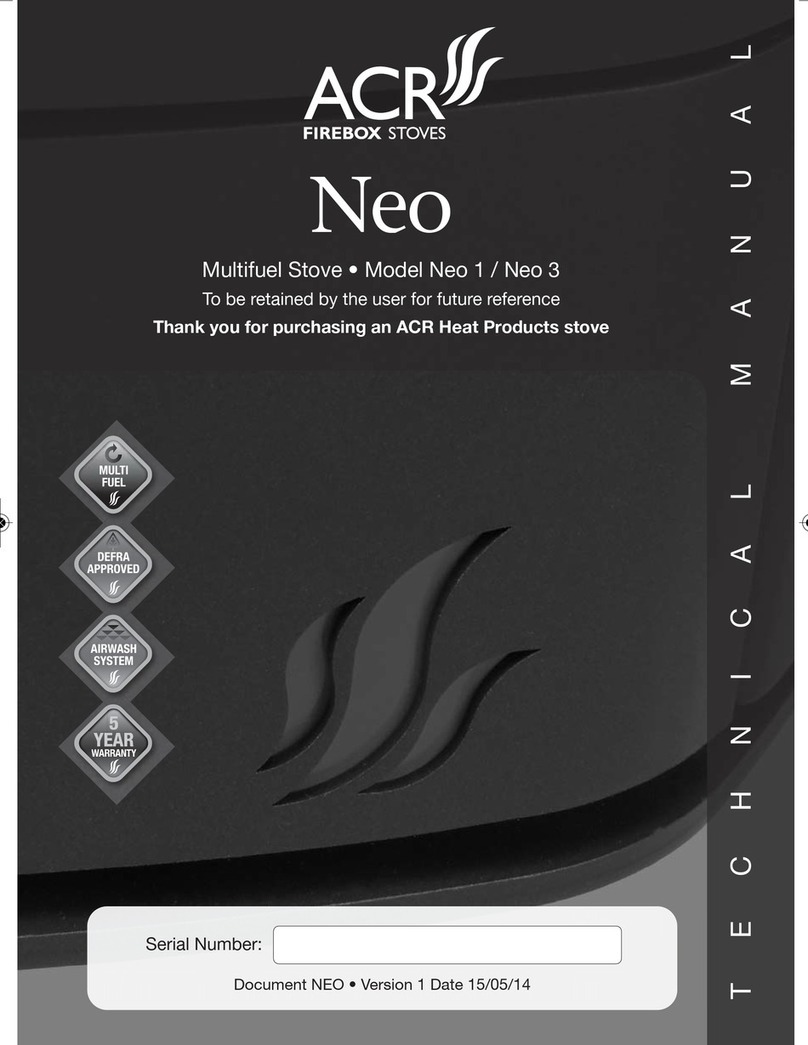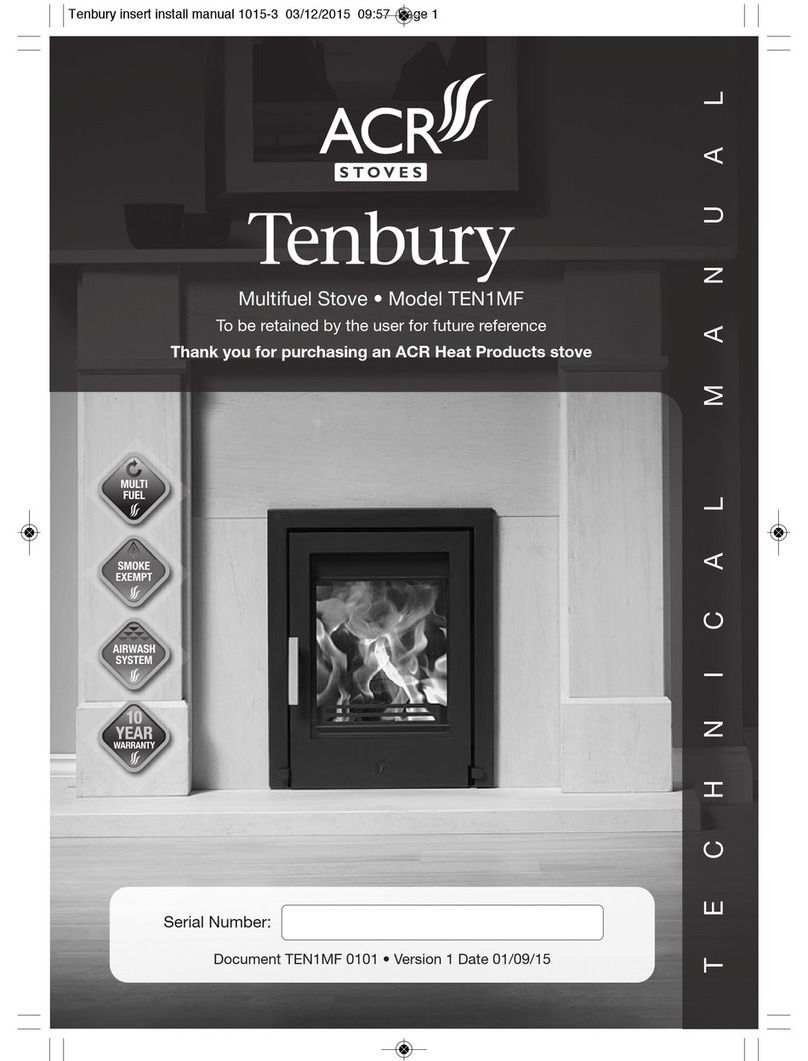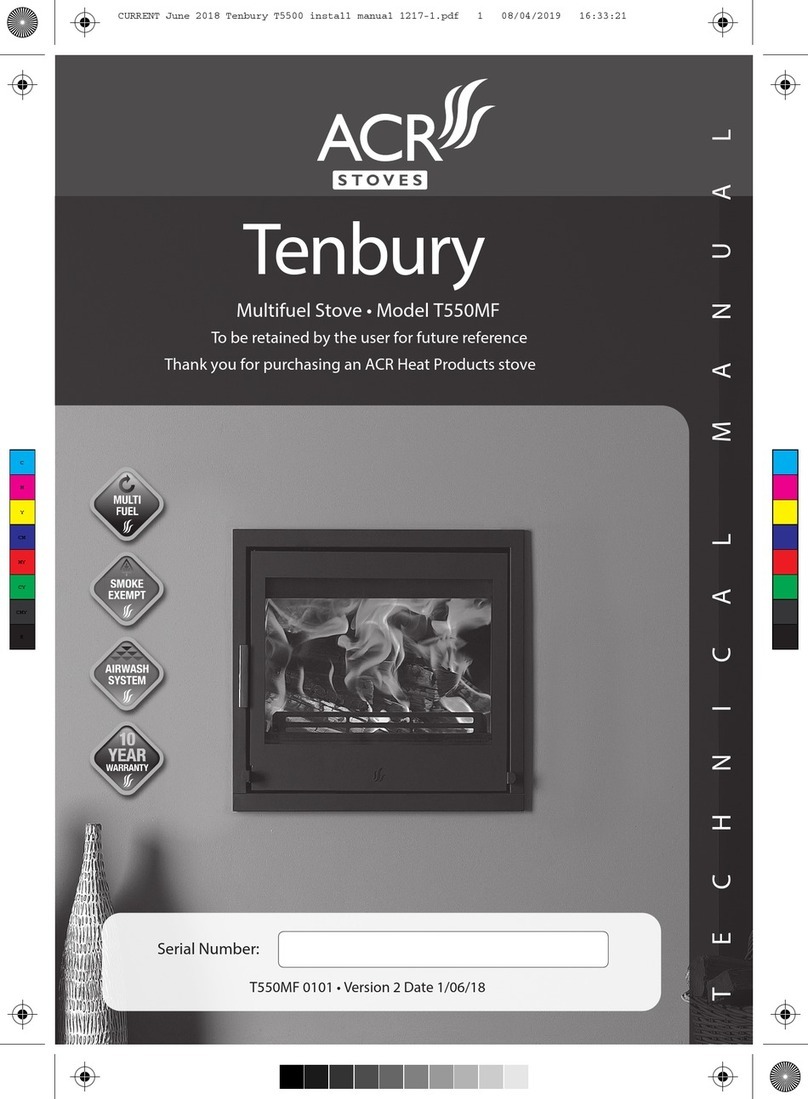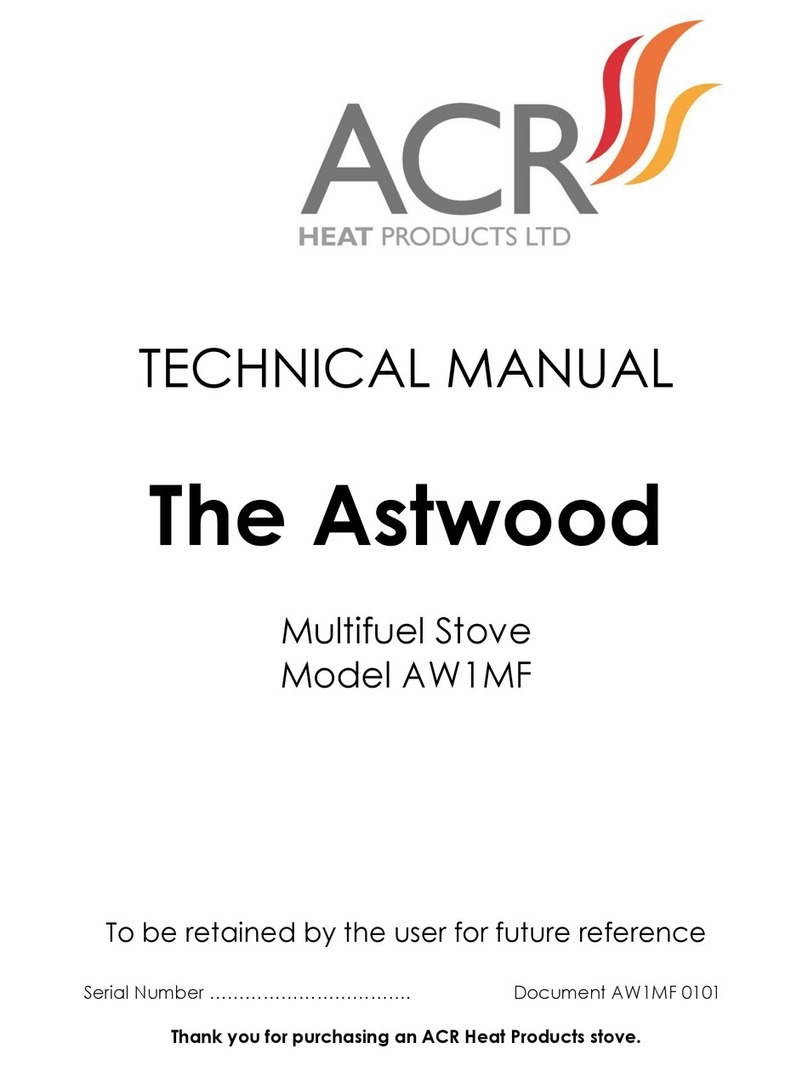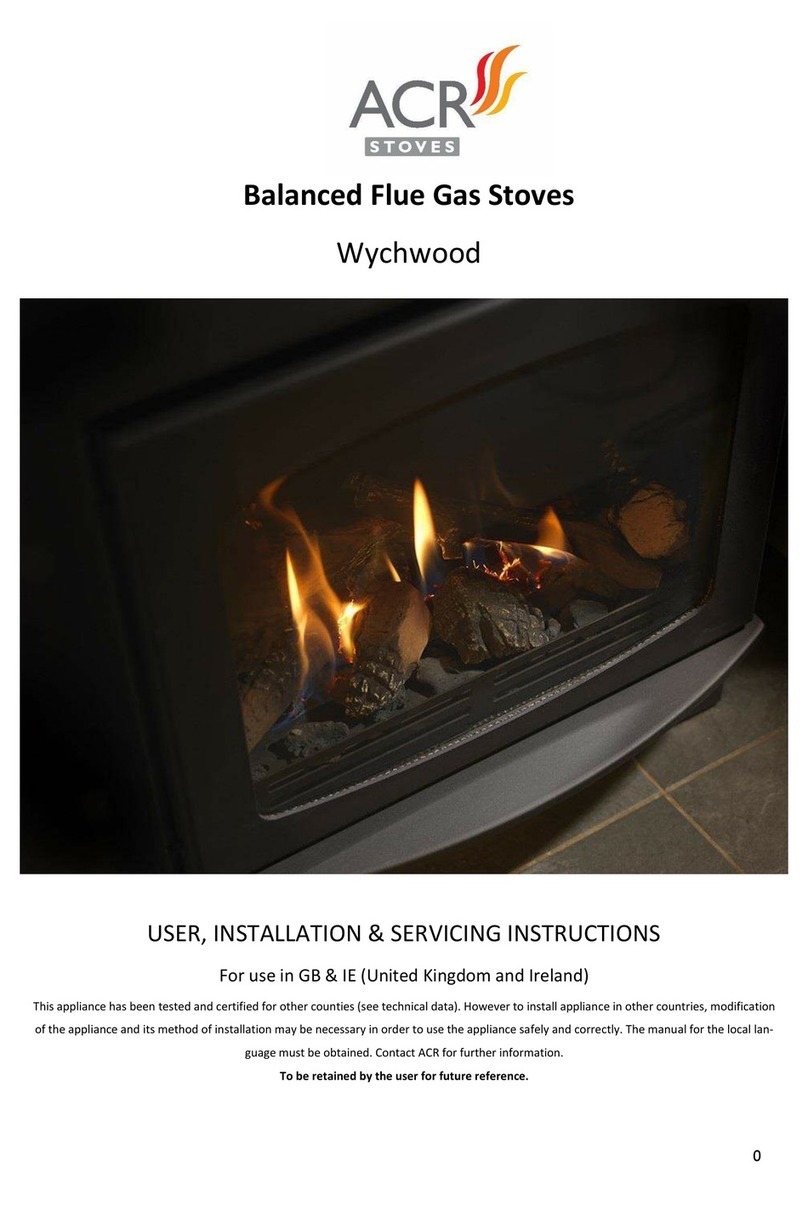
The Earlswood stove is exempted (under Section 21 of the Clean Air Act
1993) for use in a smoke control area when burning wood. It is a multifuel
appliance and can also burn suitable smokeless fuels (Authorised fuels
under Section 20 of the Clean Air Act) in a smoke control areas.
To ensure that you gain the most from your purchase, please take a few
minutes to read through this manual before lighting the appliance for the
first time.
SINCE APRIL 2002 ONLY REGISTERED COMPETENT INSTALLERS CAN INSTALL
SOLID FUEL APPLIANCES. INSTALLATIONS CARRIED OUT BY NON-REGISTERED
INSTALLERS MUST BE INSPECTED BY LOCAL AUTHORITY BUILDING CONTROL.
FOR MORE INFORMATION PLEASE CONTACT HETAS AT www.hetas.co.uk OR
TELEPHONE 0845 6345626
The installation of this appliance must comply with current Building
Regulations and local regulations, including those referring to
national and European standards need to be complied with when
installing the appliance.
Do not operate this appliance if it becomes damaged.
Improper use, maintenance or fitting parts other than those
approved by the manufacturer could lead to the appliance
becoming damaged or unsafe which in turn could lead to personal
injury or damage to the property and will void the warranty.
The appliance must not be modified in anyway unless authorized by
ACR Heat Products Ltd.
The appliance should be inspected regularly to ensure the airways
are clean and free from obstruction and the chimney swept at least
once a year.
The external surfaces of this appliance will be very hot to the touch
when in operation and due care will need to be taken when
operating the appliance to ensure safety. A fire guard should be
fitted if it is likely that the elderly, infirm or children may come into
contact with the appliance.
This appliance must not be used as an incinerator.
This appliance has been designed for intermittent operation.
Before installation, please ensure that the correct model has been supplied.
Please also make a note of the serial number of your appliance in the
space provided on the front cover of this manual as this will be requested if
you require technical assistance in the future.
